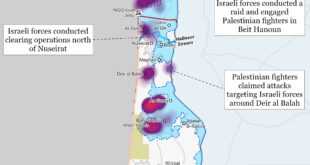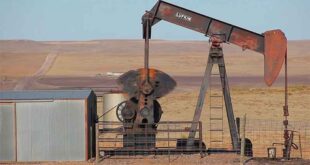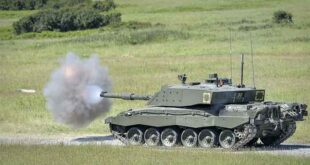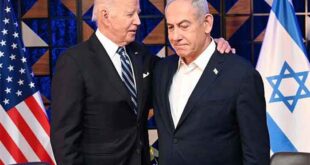
American commanders have requested guidance on dealing with an attack from those armed groups and others from Iran and the Syrian government, but officials say they have received muddled direction.
The Trump administration’s rapidly shifting strategy in northern Syria has American commanders there scrambling to protect their forces from an expected surge in actions by military units from Turkey, Russia, Iran and the Syrian government, as well as their proxy forces, according to Defense Department officials. American commanders now see these armed groups as a greater danger than the Islamic State forces they were sent to fight.
Commanders have requested guidance outlining how American forces might deal with an attack from the assortment of armed groups, including Russian-backed Syrian government forces, that have, in the past, tried to seize territory held by the United States. But they have received muddled direction from the Pentagon, two Defense Department officials said.
For now, the American command heavily relies on the instincts of junior commanders on the ground, cautionary phone calls to officials from Russia and Turkey and overhead surveillance — susceptible to failure in poor weather — to help avoid close encounters with other forces in the Euphrates River Valley, where most American troops are based.
“These forces are at risk without a clear understanding of what they are expected to achieve, and without the political support of their nation, if or more likely when, one of these American adversaries decided to attack them,” said Jennifer Cafarella, the research director for the Institute for the Study of War in Washington. “These guys are deployed in one of the most risky, complex and rapidly evolving environments on the planet.”
These concerns are the result of President Trump’s order to withdraw 1,000 American troops from the country, amid Turkey’s invasion of northern Syria in October. Weeks later, Mr. Trump approved the Pentagon’s plan to leave roughly 500 troops behind at several outposts around the city Deir al-Zour to go after the Islamic State, often known as ISIS.
Though Mr. Trump said the American presence there is “to protect the oil,” the reality is that the Americans are continuing their earlier mission of pursuing remnants of the Islamic State, military officials say. The Americans continue to operate alongside allies in the Kurdish-led Syrian Democratic Forces.
As American forces pulled back in early October, an American military document circulated to forces in the region, warned of the coming difficulties. “Complexity” surrounding American forces in northern Syria “has only increased in recent weeks as multiple opposing groups and actors have gradually increased their forces in surrounding areas,” said the document, a copy of which was obtained by The New York Times. The warning was part of a flurry of situation reports, maps and communiqués outlining the movements of Russian military forces around the Syrian city of Manbij and the start of Turkey’s military operation along the Syria-Turkey border.
Before Turkish-backed forces entered the area in northern Syria previously held by United States troops, the American and Russian militaries were responsible for coordinating military operations in that part of the country, and had done so for three years. Both militaries had relied on a “deconfliction” phone line and a separate planning group, using a map broken down into lettered and numbered sectors, known as a keypad, for reference. This allowed officials from both countries to determine where troops were operating.
But the introduction of hundreds of Turkish-backed forces quickly strained this longstanding system, as shown by the accidental Turkish shelling close to an American outpost near the Turkey-Syria border in early October. In one of the military documents obtained by The Times, American officials wrote after that attack that they “cannot rule out” that Turkish military forces “will miscalculate U.S. force dispositions again.”
Speaking to lawmakers on the House Armed Services Committee Wednesday, Secretary of Defense Mark T. Esper said that the situation in northern Syria has “generally stabilized,” although he cautioned that Turkish-backed fighters remained a “wild-card.”
Mr. Esper added that there currently are no plans to withdraw American troops from the country. “Right now there’s no disposition plans that I’m tracking,” Mr. Esper said.
Turkish-backed fighters are often poorly managed by the Turkish military, said several Defense Department officials, who added that the Russian military is far more reliable in navigating the difficulties of such a contested battlefield.
To underscore the fact that the battlefield in northern Syria is continuously changing, Gen. Kenneth F. McKenzie, the head of the military’s Central Command, said in a recent interview that protecting the oil fields might ultimately draw a larger challenge from Syrian Army troops west of the Euphrates. “I’d expect at some point the regime will come forward to that ground,” General McKenzie said.
But for now, General McKenzie said, the remaining American forces in northern Syria, working alongside several thousand allied militia members from the Syrian Democratic Forces, will be able to carry out “effective” counterterrorism missions against ISIS in that part of the country. Last month, the forces restarted operations against the terrorist group, after groups of ISIS fighters began operating again in the chaos created by the Turkish incursion and American retreat.
“We have enough to very capably, with our S.D.F. partners, pursue a counterterrorism platform against ISIS,” General McKenzie said.
He noted that the United States maintains a strong capability for reconnaissance and combat air power to protect American forces and to carry out strike missions when necessary. “We have everything we need,” General McKenzie said in the interview.
The idea that Syrian troops could move to retake ground from the Americans is nothing new.
In February 2018, about 500 Syrian troops and dozens of vehicles, backed by Russian contractors, attacked the Conoco gas plant near Deir al-Zour. American commandos there, alongside Kurdish forces and backed by waves of American aircraft, fought back, killing hundreds of the fighters.
The hourslong battle was a clear message to other fighters in the region that the Americans would protect their partner forces.
But after months of political tumult in Washington and Mr. Trump’s assent to the Turkish invasion in October, it remains unclear if American forces, even with an addition of Bradley armored fighting vehicles, would stand and fight as they have in the past, the officials said.
The Bradleys, the officials added, were sent only as a signal of resolve, not necessarily to fight the Syrian government’s military.
 Eurasia Press & News
Eurasia Press & News



